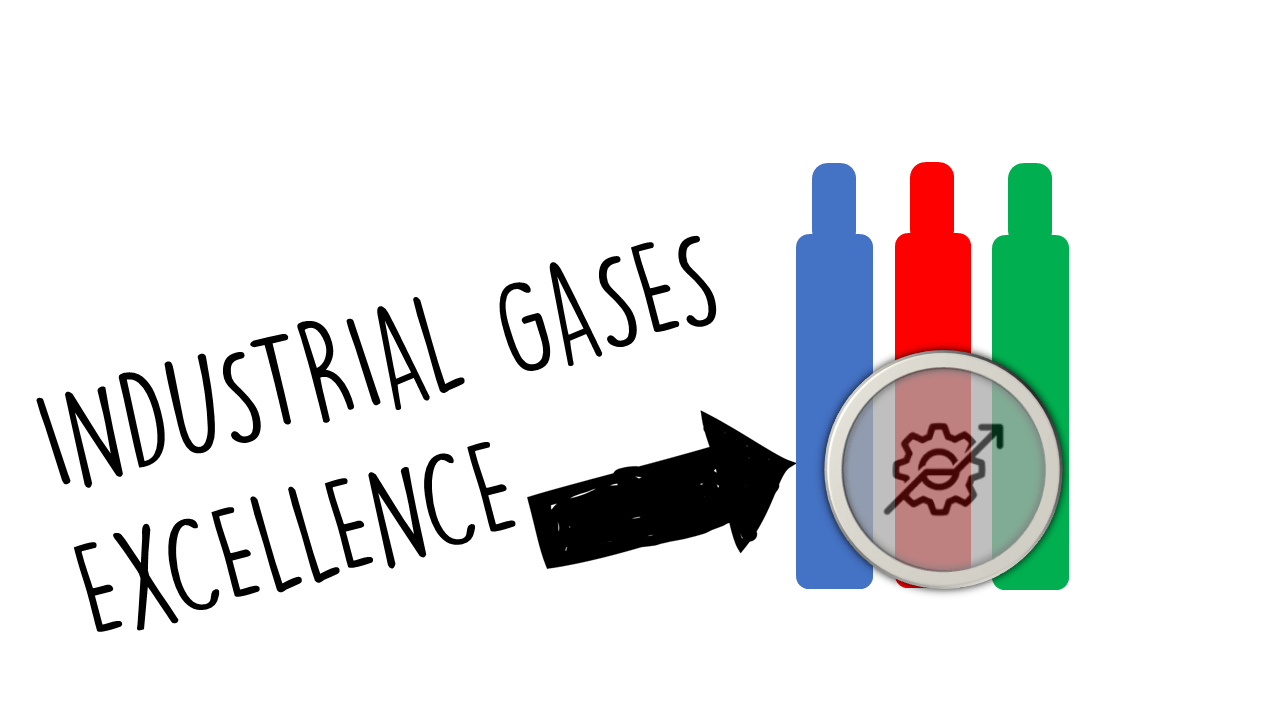The Razor & Blade model refers to a business strategy that involves selling a primary product (the “razor”) at a low price, or even at a loss, to drive sales of complementary products (the “blades”) that are higher-margin or consumables. In the context of industrial gases, this model can be applied to how companies price and supply gases (e.g., oxygen, nitrogen, argon) in a way that encourages ongoing customer relationships through the sale of complementary products or services, such as equipment, maintenance, and logistics.
Thereby the industrial gas supplier position himself as a GAS CARETAKER
Framing
To effectively frame the Razor & Blade model within the industrial gases sector, several key dimensions must be considered:
- Value Proposition: Understanding that the initial offering (industrial gas supply) is critical for establishing long-term customer relationships.
- Customer Lifecycle: Recognizing the ongoing need for consumable gas supplies and related services (e.g., safety equipment, monitoring systems) that lead to recurring revenue.
- Market Dynamics: Evaluating competition and pricing strategies that can involve price undercutting on gases to capture market share while pushing related services.
- Innovation: Focusing on developing new technologies and services that enhance customer experience and provide value beyond just gas supply (e.g., advanced gas management systems).
Re-Framing
Re-framing the Razor & Blade model in the industrial gases industry requires a vision that incorporates contemporary trends and opportunities:
- Sustainability Integration: Shifting focus to low-carbon and environmentally friendly gases, encouraging customers to transition to greener alternatives and related product offerings.
- Digital Services: Offering IoT-enabled monitoring and management solutions that help customers optimize their gas usage alongside the supply of gases.
- Customized Solutions: Providing tailored gas solutions for specific industries (healthcare, manufacturing, etc.) that can involve specialized gases and equipment.
- Partnership Ecosystem: Engaging in strategic partnerships that can expand product offerings and enhance service capabilities.
Actions
For effective implementation of the Razor & Blade model in industrial gases, organizations should consider these actions:
- Market Analysis: Conduct thorough research to identify key customer requirements and opportunities for complementary products and services.
- Pricing Strategy: Develop a competitive pricing strategy for gas supplies that attracts customers while maintaining profitability through value-added offerings.
- Customer Engagement: Foster strong relationships with customers through regular communication, feedback mechanisms, and personalized services.
- Innovate Offerings: Invest in the development of complementary products and services, such as gas monitoring systems and equipment maintenance packages.
- Sustainability Goals: Implement initiatives that promote sustainability within the gas supply chain and offer solutions that support customers’ green goals.
Case Studies
Case Study1: Leading Gas Supplier : THE GAS CARETAKER
- Challenge: Increasing competition among gas suppliers led to price wars.
- Implementation: The company reduced the price of their industrial gases but simultaneously enhanced their offerings by bundling gas supplies with monitoring equipment and maintenance services.
- Outcome: Achieved a30% increase in service contracts, increasing long-term profitability despite reduced upfront gas prices.
Case Study 2: Oxygen Supplier in Healthcare
- Challenge: Difficulty in retaining customers in a saturated market.
- Implementation: Offered oxygen at a competitive rate to hospitals and bundled it with advanced respiratory monitoring devices and training for healthcare workers.
- Outcome: Improved customer loyalty and retention, leading to a 25% increase in overall revenue from bundled services within one year.
Case Study 3: Specialty Gases Manufacturer
- Challenge: Need for differentiation in a niche market.
- Implementation: Introduced specialty gases at lower prices accompanied by tailored consulting services to help customers optimize their use of gases in production processes.
- Outcome: Cultivated an innovative reputation which secured long-term contracts with major industrial clients, leading to sustained revenue growth.
Conclusion
The GAS CARETAKER (Razor & Blade) model in the industrial gases sector presents a strategic opportunity for companies to leverage low-priced gas supplies to drive sales of higher-margin complementary goods and services.
By reframing traditional approaches to include sustainability, digital innovations, and customized customer solutions, businesses can build long-lasting relationships with clients that yield both immediate and long-term success.
Successful implementation of this model not only drives profitability but also positions companies as leaders in an increasingly competitive and environmentally conscious market. Embracing this strategy enables industrial gas suppliers to navigate future challenges and thrive in a dynamic landscape.



